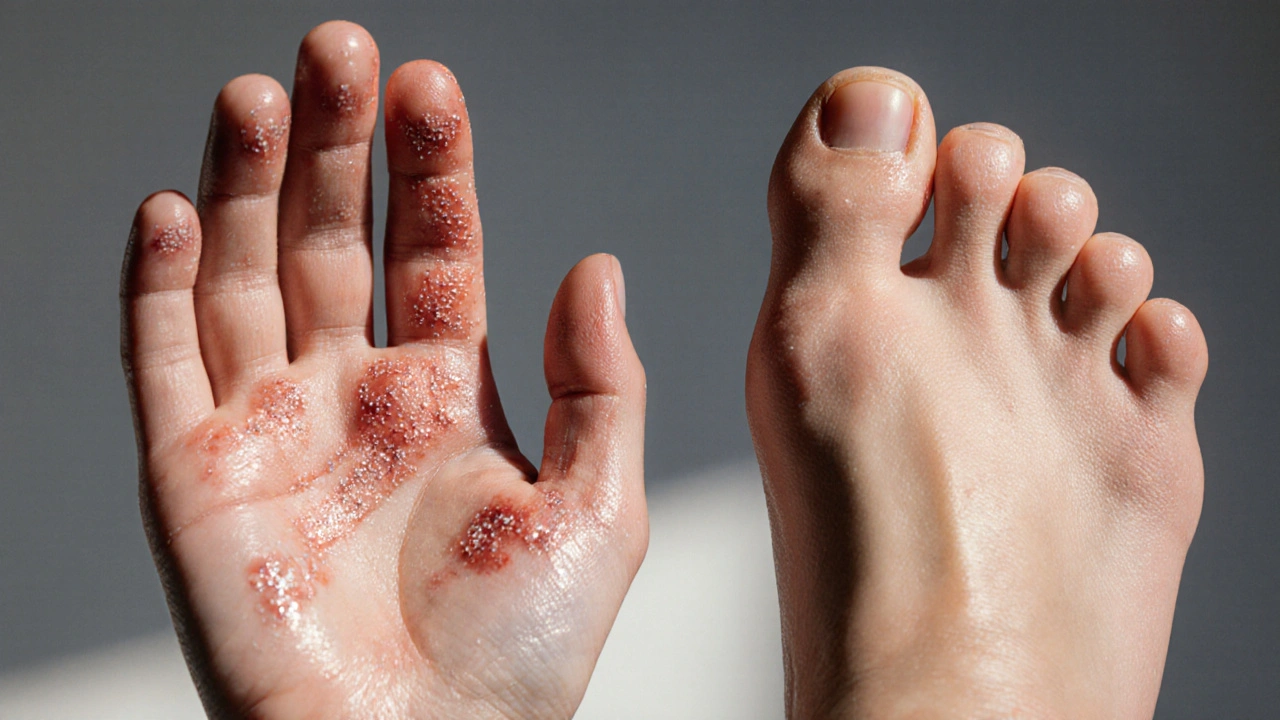Psoriasis Treatment: What Works and Why
When dealing with psoriasis, a chronic immune‑mediated skin condition that produces red, scaly plaques, finding the right psoriasis treatment can feel like a puzzle. The disease shows up on elbows, knees, scalp, and even the lower back, and its severity ranges from occasional patches to extensive coverage that impacts daily life. Because the condition is driven by an overactive immune response, therapy usually targets inflammation, skin cell turnover, and barrier repair. Psoriasis treatment therefore includes three big ideas: calm the immune flare, smooth the rough surface, and protect the skin barrier.
Key Approaches to Managing Psoriasis
One of the most powerful halobetasol, a high‑potency topical corticosteroid often combined with agents like tazarotene to boost efficacy combos can shrink thick plaques in just weeks, but it demands careful dosing to avoid skin thinning. For moderate to severe cases, biologic therapy, injectable drugs that block specific immune pathways such as TNF‑α, IL‑17, or IL‑23 has changed the game, delivering clear skin for many who didn’t respond to creams. Phototherapy, controlled exposure to UVB or PUVA light that slows skin cell growth and reduces inflammation remains a solid middle ground, especially when patients want to avoid systemic meds. Moisturizers act as the unsung heroes; a thick, fragrance‑free cream restores lipids, reduces transepidermal water loss, and makes other treatments work better. Gentle cleansers, avoiding hot water, and using lukewarm showers prevent further irritation. Stress management, regular exercise, and limiting alcohol also tip the balance toward calmer skin.
Putting these pieces together creates a roadmap that fits most lifestyles. If you prefer a quick‑acting solution, a doctor‑prescribed halobetasol regimen may be the first step. When plaques cover larger areas or resist steroids, biologic therapy offers a long‑term answer, though it requires blood tests and regular injections. Phototherapy bridges the gap for those who want a non‑injectable option with proven results. And no matter which core treatment you choose, daily moisturization and simple lifestyle tweaks keep the skin barrier strong and flare‑ups rare. Below you’ll find a curated set of articles that dive deeper into each of these strategies, compare costs, share safety tips, and show real‑world experiences so you can pick the path that feels right for you.
Managing Plaque Psoriasis on Hands and Feet: Practical Tips and Treatments

Learn practical steps to control plaque psoriasis on palms and soles, from daily moisturising routines to effective topicals, lifestyle tweaks, and when to seek dermatologist help.
